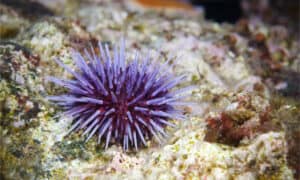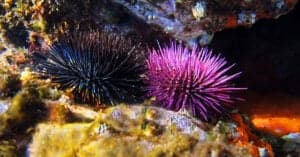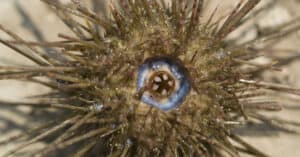If you’ve been particularly lucky when walking along the beach, you may have found what is known as a sand dollar. These special items are round and white, with a pattern that may resemble a flower at first glance. While these rare “shells” are exciting to find, what exactly are they?
To learn the answer to “What is a sand dollar” as well as five interesting facts, continue reading below!
What Is a Sand Dollar?
Believe it or not, this shell is alive! Or, at leas,t it was, depending on its state when you found it. The flat, white “sea shells” you’re likely to find along the shoreline are actually deceased members of the order Clypeasteroida. This includes burrowing sea urchins. Other names for these species include “sea cookies,” “snapper biscuits,” “sand cakes,” and “cake urchins.”
The white “shell” that the Clypeasteroida leaves behind when it passes is a unique type of skeleton known as a test, which all members of Clypeasteroida possess. When living, the sand dollar’s test is covered in velvet-like spines, which have small, hair-like protrusions known as cilia. If you ever happen to find a living member of a Clypeasteroida species, you’ll notice that they appear to be furry, and they’re often brown or a similar color rather than white.
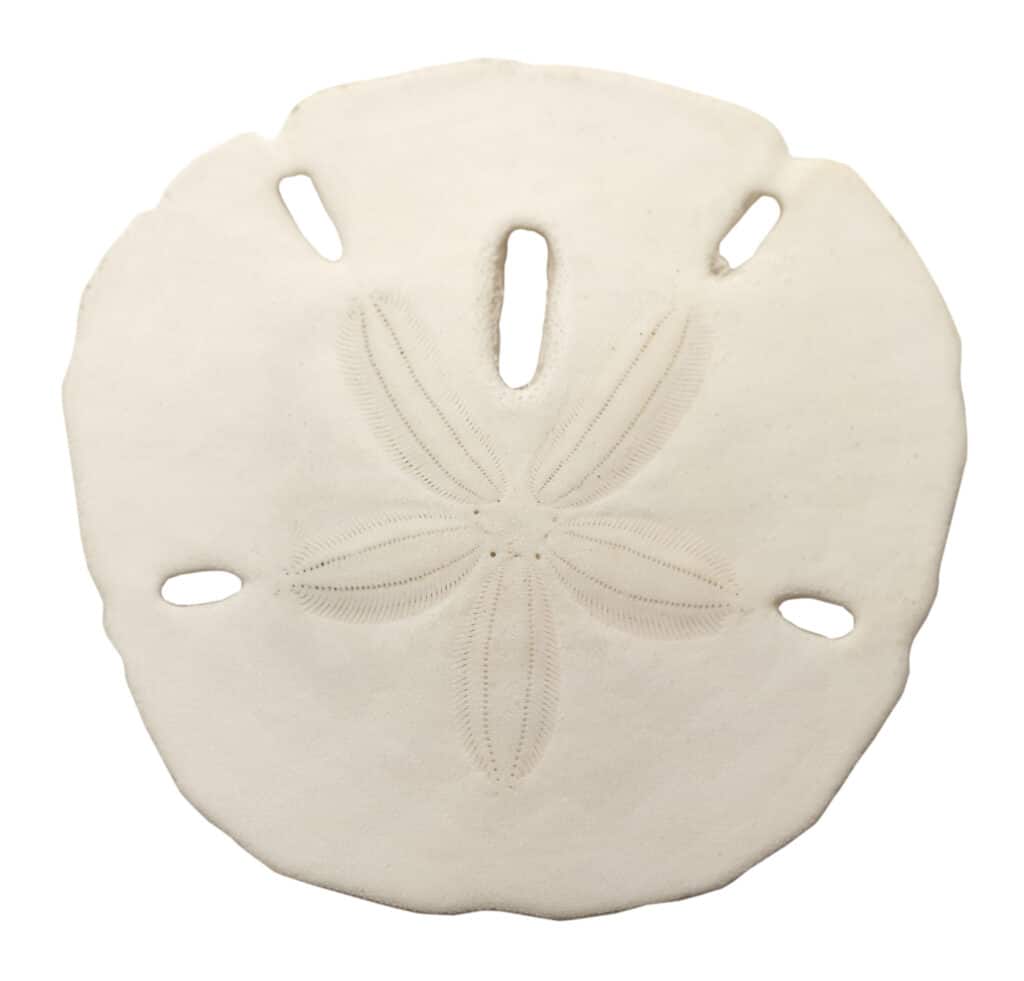
The sand dollar you may find on the beach is the skeleton of a once-living ocean creature!
©Megapixel/Shutterstock.com
5 Facts About Sand Dollars
Aside from learning that tests of Clypeasteroida you find were living animals, there are many other mind-blowing facts to be known about this unique order. Keep reading to learn five interesting facts about the order of Clypeasteroida.
1. Sand Dollars Use Their Spines to Eat
As mentioned above, when sand dollars are alive, they’re covered in spines with cilia. However, this design isn’t just for aesthetic purposes. The unique exterior of the sand dollar is actually designed in such a way to help them eat.
The mouth of a sand dollar is at the center of their bottom side. Using their cilia, they are able to sweep small bits of food into their mouth, where it can take up to two days to digest their meal. Some of the most common organisms to be consumed by sand dollars include crustacean larvae, small copepods, diatoms, and algae.
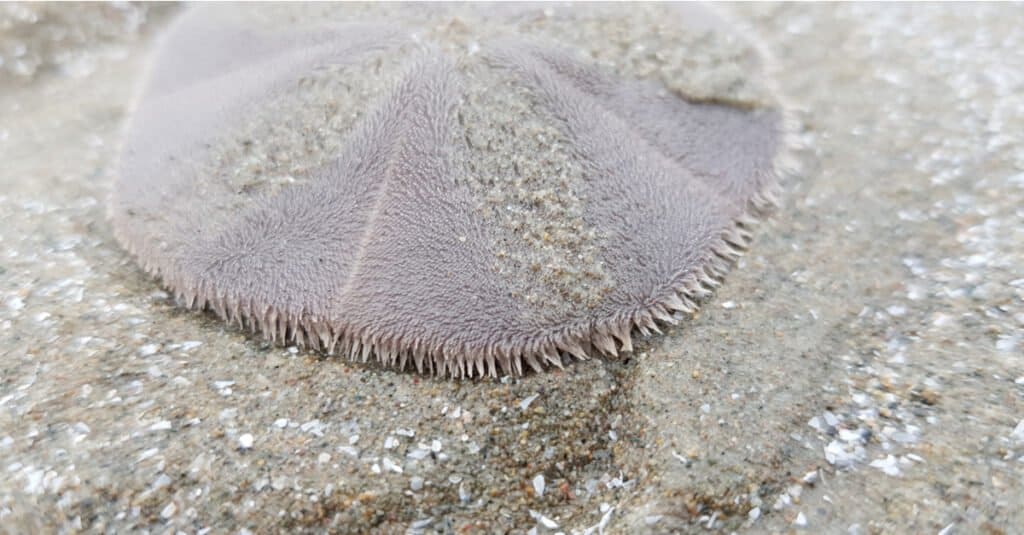
are covered in fine hairs known as cilia that help them eat.
©Reptilian/Shutterstock.com
2. The Flower-like Design of Holes and Slits Serves an Important Purpose
Just as the sand dollar’s cilia have a unique purpose, so do the holes and slits that cover their surface. Oftentimes, when you find a test, it is the flower-shaped design that may catch your eye. When the Clypeasteroida animal is alive, these holes are used for many natural biological processes. This includes gas processing as well as water processing. These aren’t the only purposes, however. Depending on the exact species of Clypeasteroida, it may also use these anatomical features for capturing food or preventing itself from being lost to the current.
3. Sand Dollars Group Together in the Ocean
With an entire ocean and a limited amount of prey, one may think that these species would choose to live on their own. After all, as we see from many above-water animals, leaving alone can be a beneficial way to utilize resources like land and food efficiently. However, this is not the case for members of the order Clypeasteroida, which prefer to group together.
The main reason that they tend to group together is for reproductive purposes. These species reproduce through group spawning, which means that both male and female gametes are released into the surrounding water for fertilization. When a large group comes together, there is a better chance of creating offspring.
4. There Are Very Few Predators of the Sand Dollar
Sand dollars have a tough skeleton and minimal fleshy parts. As a result, they aren’t exactly appetizing to many of the predators that live in the ocean. However, this doesn’t mean that the sand dollar has no predators. Instead, they are preyed on by animals adapted to digesting them, such as the ocean pout and even large sea stars.
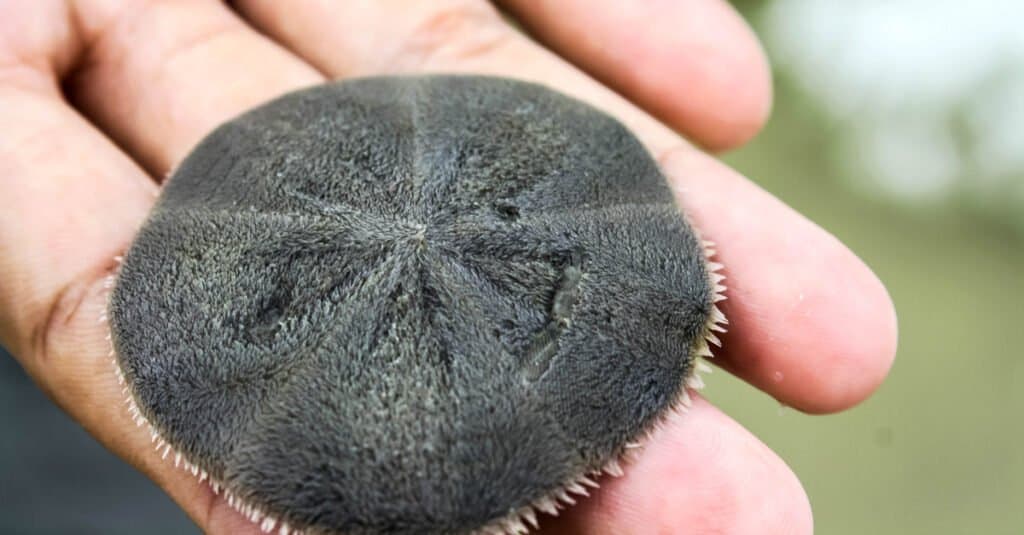
Due to the test of the sand dollar and its few edible parts, it does not have many predators.
©k_lmnop/Shutterstock.com
5. Sand Dollars Have Age-related Rings Similar to Trees
If you’ve ever seen a sample taken from a tree or even a stump where a tree has been cut, then you mauve have noticed the rings there. These rings act as a beneficial method of aging an organism, with each ring symbolizing a year of life. Larger trees will have more rings, and, thus, they will have lived longer than smaller trees with fewer rings.
The same can be said for sand dollars. Like trees, the test of a sand dollar will sport several layers of rings, each one increasing the total body size and marking another year of life. On average, sand dollars can live to be between six and ten years old.
The photo featured at the top of this post is © mrKrich/Shutterstock.com
Thank you for reading! Have some feedback for us? Contact the AZ Animals editorial team.



